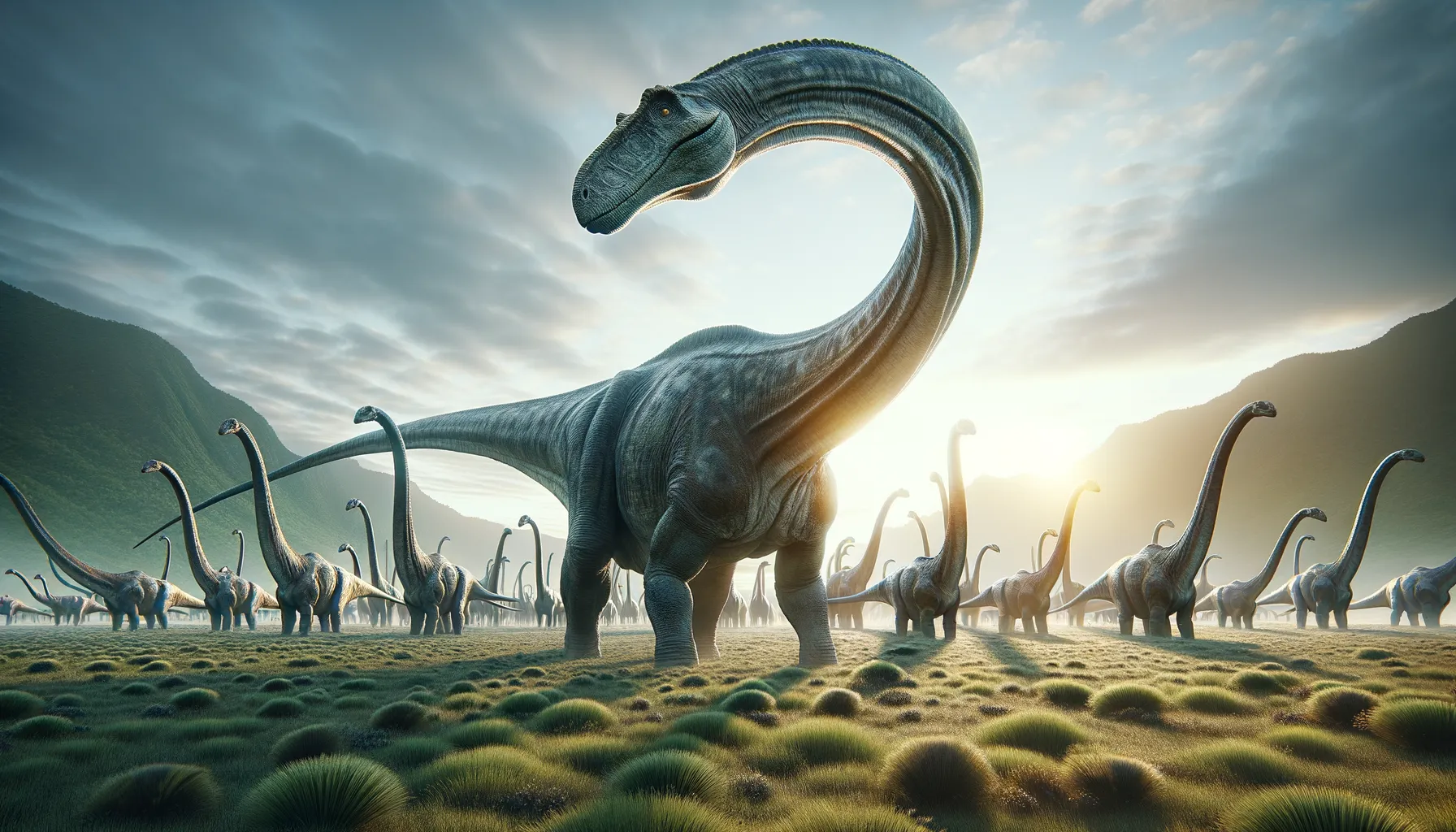
Daanosaurus
Grazing giant of the Late Jurassic!
Period
Jurassic
Length
Reaching up to 23 meters in length.
Height
Approximately 10 meters tall.
Weight
Around 18,000 kilograms.
Daanosaurus was a long-necked sauropod dinosaur from the Late Jurassic period. Its fossils were discovered in China, and it provides insight into the diverse ecosystem of its time. Daanosaurus's elongated neck suggests it was adept at reaching tall vegetation, feeding primarily on plants. This dinosaur's immense size helped to deter predators and allowed it to graze over large areas.
Diet
Daanosaurus was an herbivore, mostly feeding on the foliage of trees and tall shrubs. Its long neck allowed it to access vegetation that other herbivores might not reach, giving it a competitive edge in its environment.
Hunting
While Daanosaurus did not hunt, as it was not a carnivore, it was always vigilant against predators. Its sheer size was a deterrent to most predators, though juveniles may have been more vulnerable.
Environmental challenges
During the Jurassic period, Daanosaurus faced environmental challenges such as fluctuating plant availability due to seasonal changes. This required migratory behaviors to find food. The environment was also subject to volcanic activity, influencing the landscape and occasionally disrupting food sources. Finding sufficient water was another challenge as this large dinosaur needed to stay hydrated in potentially dry climates.
Speed
Believed to be moderately fast for its size.
Lifespan
Estimated to live several decades.
First discovery
Discovered in 2005 in Sichuan, China.
Fun Facts
- Daanosaurus was a small long-necked dinosaur that lived around 160 million years ago during the Jurassic period.
- It was discovered in China, adding to the region's reputation for incredible dinosaur fossils.
- Daanosaurus is thought to have been a herbivore, feasting on plants using its long neck to reach high branches.
- Despite its long neck, Daanosaurus was relatively small compared to other sauropods, which are large long-necked dinosaurs.
- The name 'Daanosaurus' combines a reference to the area it was found, the Da'an District, with the Greek word for lizard, 'saurus'.
- Daanosaurus fossils have helped scientists better understand the early evolution of long-necked dinosaurs.
- Its discovery highlights the great diversity of dinosaur species that existed in Asia during the Jurassic period.
Growth and Development
Daanosaurus hatched from eggs and grew rapidly in the first few years of life, a necessary adaptation to avoid predation. Its juvenile stages were vulnerable, and it likely relied on herd protection for safety. Growth rates slowed as it reached maturity, although it continued to gain weight and mass throughout its lifespan.
Habitat
Daanosaurus inhabited lush, forested areas and open plains. These environments provided ample vegetation necessary for its diet. It likely preferred regions with access to water sources such as rivers or lakes, important for both drinking and supporting plant life. The climate was generally warm and humid, crucial for sustaining the diverse flora of the era.
Interaction with other species
Daanosaurus coexisted with various other dinosaur species, including smaller herbivores and large carnivores. Herd behavior may have been common, providing protection and social interaction. Its significant size required it to avoid competition with smaller herbivores by feeding on vegetation higher up.
Natural lifespan
Its natural lifespan was likely similar to that of other large sauropods, estimated at around 70 to 100 years.
Reproduction
Daanosaurus reproduced by laying eggs, often in nests constructed in soft, sandy areas for protection. Clutch sizes were likely large to increase the chances of survival. Parental care was minimal once the eggs hatched, but collective herd behavior provided some protection for the young.
Social behaviour
Daanosaurus likely lived in herds, offering protection and fostering social interaction among individuals. This social structure could have helped with migrating to new areas in search of food and water. Communication within the herd might have included vocalizations and physical displays.
Fossil locations
Fossils of Daanosaurus have been primarily discovered in Sichuan, China, providing insights into the Jurassic landscape there. The discovery site suggests a richly diverse ecosystem during that time. Its remains have helped paleontologists understand the distribution and diversity of sauropods in this region.
